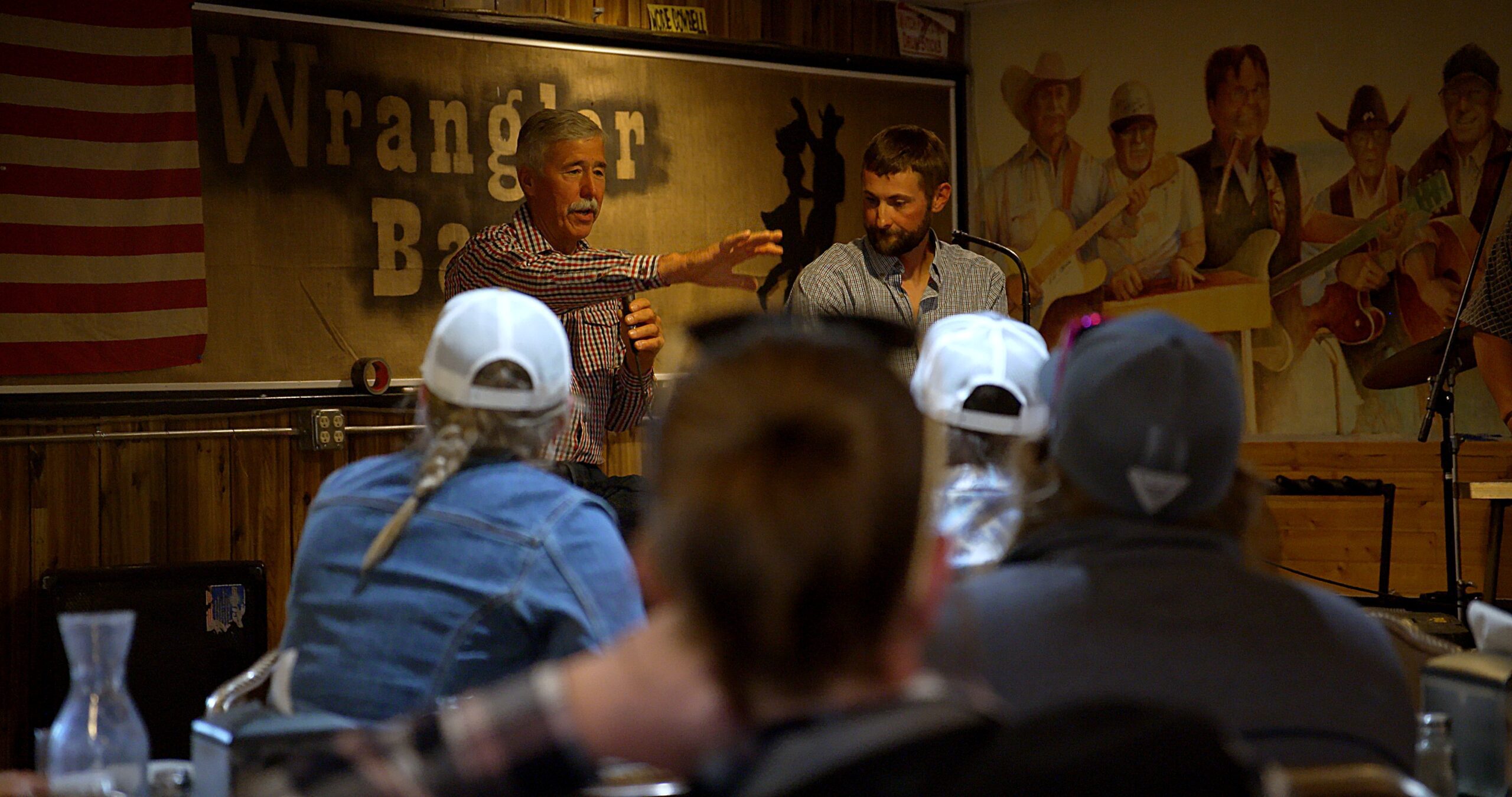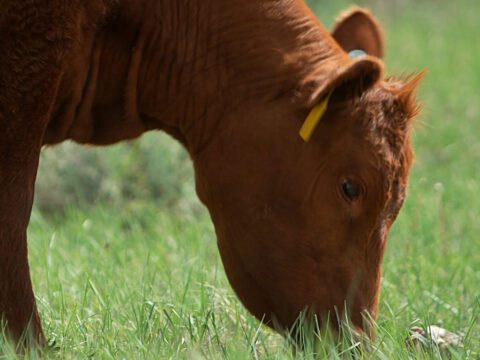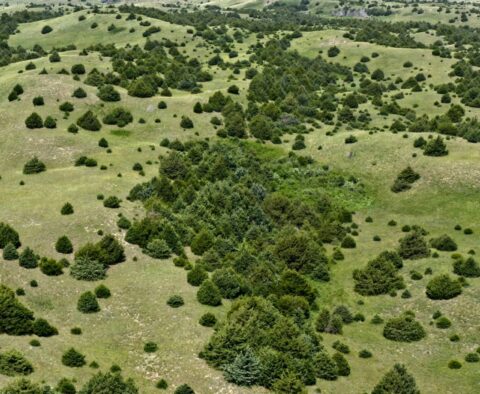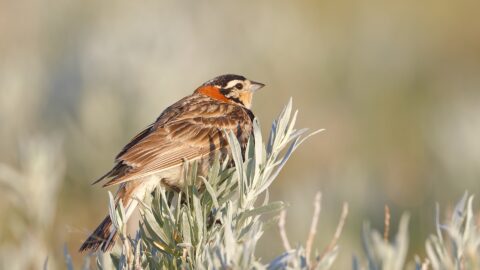“Uncrossed Arms”
Collaborating for a Healthy Range and Stronger Communities
Debunking the myth of the solitary rancher by highlighting the cooperation and collaboration essential to communities living and working in northeast Montana.

It’s a story of a community. A pile of ranchers working together in a really important, challenged landscape. People like to see things that work, and these things work.
Bill Milton, Milton Ranch, Montana
Good morning. Good morning.
How are you guys?
Well, thanks for coming. I’m really humbled for you guys show up. These kinds of places are an extension of of us. So for you guys to be interested in what we’re doing out here, I appreciate it.
Just to give you some context of where we’re standing, last year, I rested this, believe it or not. We didn’t graze it. By doing that, we just built up some root structure so this native could get a start. This is as natural as it gets. There’s one introduced grass species that I can see. And all the rest have been here for 100 years.
I’ve been a few places, Australia and Europe, seen a lot of pretty country. But for me, especially right now, when it’s green, seeing this creek valley, the hills over here, that’s about as good a view as you get.
When I was a kid, our cattle were were probably two or three or four hundred pounds smaller than they are now. And we’re actually running more livestock than we used to, but yet the range is in better condition than it ever used to be. And so I just want that to continue. I want my son to be able to ranch, his kids if they want to do it. And just keep improving, keep adapting.
The health of the land is the most critical thing. I mean, we’re raising cattle, but if you don’t have good range, good habitat, you’re not going to stay profitable. You could overgraze and it might make a buck for a year or two. But down the road, if you abuse your land, you destroy your resource. You can’t continue. There won’t be anything there for the next generation.
How well we’re doing taking care of the land is affecting us immediately, but is also having a long term effect on our business and our family and the community in general. And so if we’re all doing a better job of taking care of our land, then our community is going to last for longer.
It seems like in rural America, it’s all about relationships. And I think that’s where RSA has really taken off. Where they’ve been able to pool resources between many entities has been very helpful for the local community. You kind of have to do that because of the capital cost. Things are just so expensive that these little communities have to really work together.
ACES started because there was just kind of a desire to talk about what else could we do for the community and for our own operations and for the town, and to try to keep the school alive. And it was kind of a whole picture. I think ACES has exploded in the past few years in ways that we didn’t even dare to wish.
When I was in high school, I guess I kind of felt like there wasn’t as much pride in the local community. People weren’t coming together as much as they used to. And now that ACES and all the other committees and groups that have sprung up since then, there seems to be a lot more pride in the community and people are coming together.
You can grow your successes across the fence lines and you can mitigate some risks by sharing your failures with other people. And if my neighbor succeeds, that means my neighbor’s kids get to come home. And if my kids and my neighbor’s kids come home and the next neighbor, then, you know, the town survives and you still have the ability to grow your family in the same place that you were raised.
Each of these different groups, we can look at the 20% that we don’t agree on because there’s plenty of things we probably don’t agree on. But there’s way more things that we all can agree on, and that’s doing good things on the land, doing good things for your operation and doing good things for the community. And so it’s been really empowering to focus on what works and what we agree on instead of the things we disagree on.
Yes, very much so. I guess I’ve always said that cooperation is the way to get things done and conflict is the way to butt your head on the wall.
The people in the projects, and the partners, and the groups, and really every personal relationship that comes through RSA is kind of built in as a more intentional and thought-forward kind of action.
We say it time and time again, but it’s the collaboration. Every group that gets involved gets more and more excited about what groups like ACES are doing, and it’s starting to spread around to where other people are wanting to start these collaboratives. And it just benefits everyone. It benefits everyone in the town on ranches and makes us feel less alone.
We think of ourselves as rugged individualists, but I’ve since matured in my thinking. We work for the federal government through the BLM. You know, we’re tasked with stewardship of their acres.
And there’s a vast amount of resources out there that want to help me do better work so that the wildlife can benefit from the better work that we do. So we work with Ducks Unlimited, World Wildlife Fund, the Nature Conservancy, the Rancher Stewardship Alliance, U.S. Fish Wildlife Service, Montana Fish, Wildlife and Parks, Montana Stock Growers.
Pheasants Forever.
Can’t forget Pheasants Forever.
We play a positive role in this landscape. It’s just a better way to live.
You can’t do this without partnerships and you can’t do it without funding. And so NFWF puts a lot of priority on building trust and partnerships and with that, we have the funding to do good on the ground action.
And so it’s a culture. It’s a culture of trust and appreciation of differences. And it’s a story of a community, a pile of ranchers working together in a really important challenged landscape. Now that’s an important story and has impact. And people from afar can say, “wow, there’s a bunch of people that are actually making decisions and cultivating partnerships to take care of land and take care of their community.”
People like to see things that work and these things work.
And that’s what everybody wants. They just want to get stuff done.
It’s just constantly changing and for the better. It just so amazing what this country will do when you when you figure out what is happening and try to work with it.
The human resource is a pretty powerful one and we need to make better use of it.
It’s different for everyone in how they come to the table. It takes a little bit for people to uncross their arms at times, but it’s beautiful to see when it does happen. And the more people that do come to the table, the better an example it sets and I think it just catches and it just starts to spread a little bit faster every year.
There were a couple of environmental groups that first expressed interest in talking with us, and almost all of us would have said at that point, you know, those guys are the enemy, they’re out to get us. It took a couple of years of sitting across the table from each other. I mean, they seemed to express interest in our group and we were skeptical. But after a couple of years of back and forth and talking, we realized that a lot of the things we want are the same.
It was even more surprising to me that they are willing to give our group funding for conservation measures that then we can turn around and distribute to different producers in the area.
All those groups want to see the native prairie preserved, and that’s what I want to so. Turns out we can work with them.
End of Transcript



